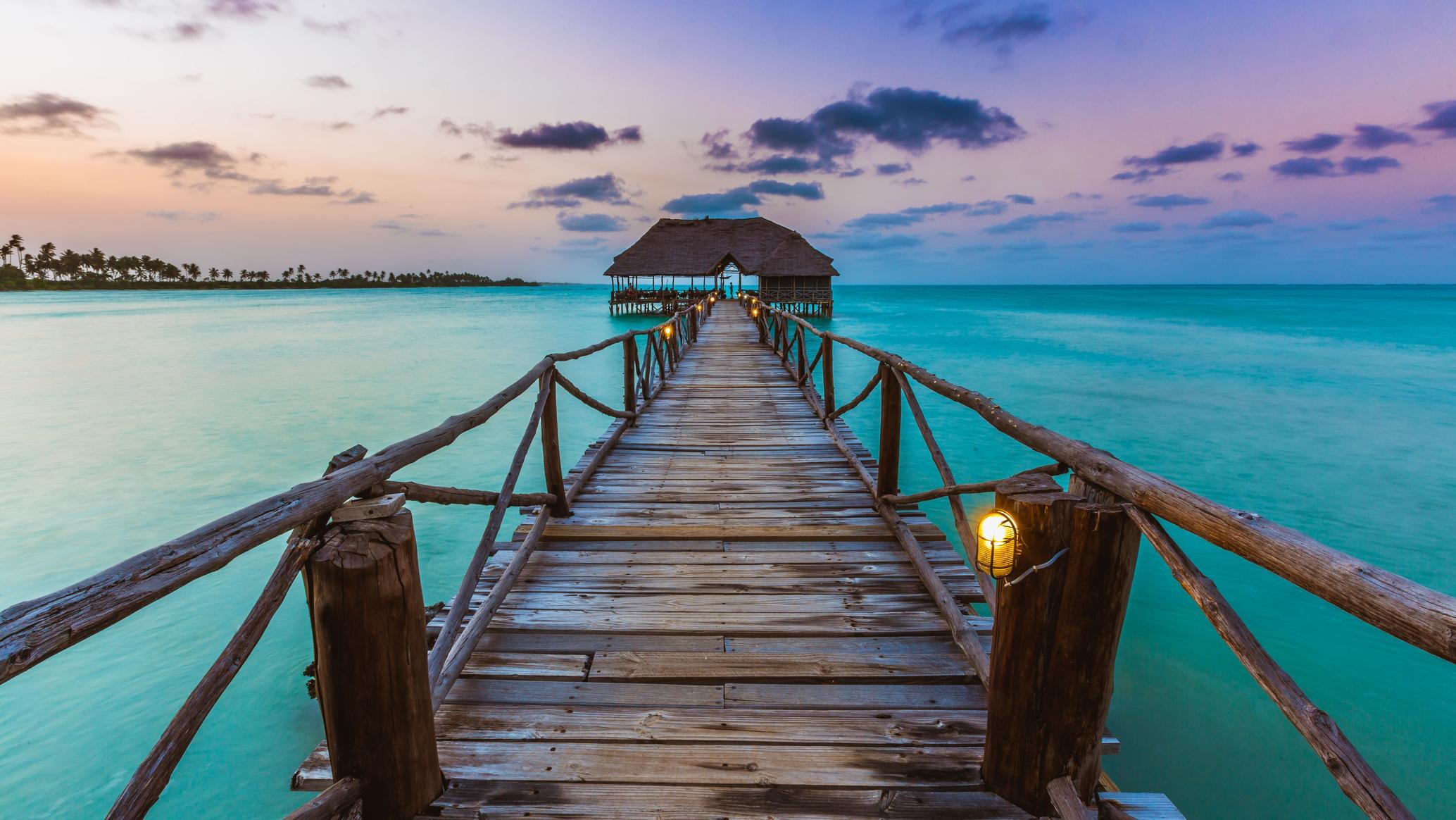



Zanzibar City or Mjini District, often simply referred to as Zanzibar is one of two administrative districts of Mjini Magharibi Region in Tanzania. The district covers an area of 15.4 km². The district is comparable in size to the land area of Nauru. The district has a water border to the west by the Indian Ocean. Wikipedia
Best months: June to October and December to February — warm, dry, and ideal for beaches and sightseeing.
Avoid: Mid-March to May (long rainy season) — heavy rain and humidity.
Short rains in November are brief but manageable.
By air:
Fly into Abeid Amani Karume International Airport (ZNZ) — 15–20 minutes from the city.
Direct flights available from Dar es Salaam, Nairobi, Kilimanjaro, and some international hubs.
By ferry:
Fast ferries operate between Dar es Salaam and Zanzibar City (approx. 2 hours) — book with reputable companies.
Reserve early during holidays or weekends.
Stone Town (UNESCO World Heritage Site):
Forodhani Gardens – Oceanfront square with street food vendors, lively at night.
House of Wonders (Beit el-Ajaib) – Former sultan’s palace; under restoration but iconic.
Old Fort (Ngome Kongwe) – 17th-century fortress with shops and cultural events.
Freddie Mercury’s House – Birthplace of Queen’s lead singer, now a small museum.
Darajani Market – Bustling bazaar for spices, produce, and local goods.
Slave Market & Anglican Cathedral – Emotional historical site with preserved slave chambers.
Hamamni Persian Baths – 19th-century public baths with beautiful architecture.
Palace Museum (Beit al-Sahel) – Former royal residence with artifacts from the Sultanate era.
Wander Stone Town’s alleys – Admire wooden doors, carved balconies, and coral stone walls.
Spice tour – Visit nearby spice farms to see, smell, and taste Zanzibar’s famous cloves, nutmeg, cinnamon, and more.
Cooking classes – Learn Swahili dishes like pilau, biryani, and coconut curries.
Dhow sunset cruise – Sail around the harbor with snacks and music.
Prison Island (Changuu) – Short boat ride to see giant tortoises and snorkel.
Visit local museums – Learn about Omani, African, and colonial influences.
Swim and snorkel – Small beaches and reef areas around the city.
In Stone Town:
Boutique hotels in restored mansions
Rooftop guesthouses with sea views
Budget hostels for backpackers
Outside the city (within 15–30 mins):
Beach resorts in Mbweni, Mangapwani, or Fumba
Eco-lodges and villas near quiet coves
Street food at Forodhani Gardens:
Zanzibar pizza, grilled seafood, sugarcane juice, chapati wraps
Swahili dishes:
Urojo (Zanzibar mix soup), coconut fish curries, octopus stew, pilau rice
Seafood: Always fresh and widely available
Top spots:
Rooftop restaurants with sunset views
Local diners ("mama’s kitchens") for authentic, home-style cooking
Indian and Arab-influenced eateries from Zanzibar’s trading past
Zanzibar is predominantly Muslim, so modest dress is appreciated, especially in Stone Town.
Greetings are warm; "Jambo", "Asante", and "Karibu" go a long way.
Call to prayer echoes across the city from mosques five times daily.
Cultural mix: African, Arab, Persian, Indian, and European influences — reflected in architecture, music, and food.
Traditional Taarab music, storytelling, and festivals keep Zanzibar’s heritage vibrant.
Respect local customs – No swimwear outside of beaches; cover shoulders in town.
Carry cash – Some places don’t accept cards; Tanzanian shillings are preferred.
Watch for touts – Politely decline if you’re not interested in tours or shops.
Use bottled water – Avoid drinking tap water.
Explore on foot – Stone Town’s charm lies in its walkable, maze-like alleys.